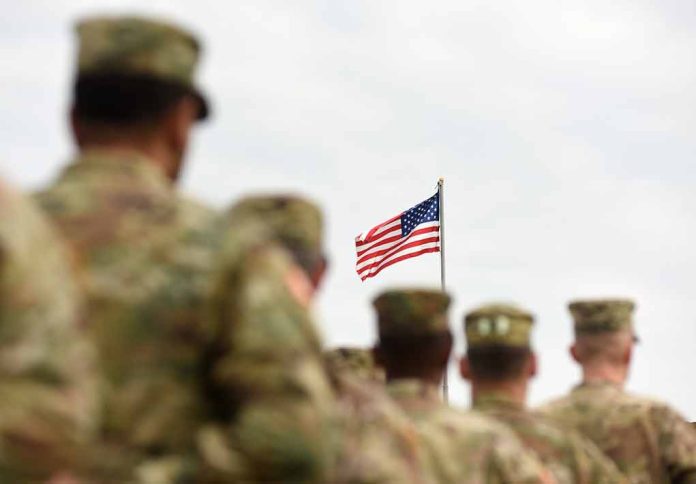
A recent decision by the U.S. Army to halt transgender enlistment sets off debates over military readiness and inclusivity.
Key Takeaways
- The U.S. Army announced it will no longer allow transgender individuals to enlist and will stop providing gender transition procedures.
- The decision is effective immediately, affecting all new accessions and medical procedures for gender dysphoria.
- The Army emphasized treating transgender individuals with dignity and respect.
- A lawsuit has been filed by transgender service members against the executive order.
- The decision aligns with an executive order recognizing only “two sexes, male and female.”
New Policy Implementation
The U.S. Army has announced a suspension on the enlistment of transgender individuals, as well as a halt on gender transition procedures. This policy change stems directly from an executive order signed by President Donald Trump. The Army will refine its recruitment practices to comply with longstanding defense standards aimed at maximizing military readiness.
Effective immediately, new entries for individuals with a history of gender dysphoria are on hold. Medical procedures linked to gender transition, whether unscheduled or planned, are paused. The announcement reasserts a commitment to treat all service members with dignity and respect, though the specifics of this commitment remain to be tested amidst legal challenges.
Examination of Wider Implications
President Trump’s order underscores a return to traditional military expectations. It posits that aligning gender with biological sex is essential to uphold the values of cohesion and readiness. Critics argue the decision disregards the contributions of transgender service members who have fulfilled vital roles in various specializations.
“Transgender service members have been serving openly for almost ten years, and currently fill critical roles in every branch and specialty, including infantry, aviation, nuclear engineering, law enforcement, and military intelligence,” said SPARTA Pride, a nonprofit organization for transgender service members and veterans.
A key defense from advocates is that transgender service members demonstrate no impediment to readiness or capability, driving home the core of their constitutional challenge. As the issue draws escalating attention, a lawsuit by transgender service members emphasizes constitutional breaches and national security risks posed by the executive order.
However, advocates for the order point to concerns about medical readiness and deployability, highlighting that gender transition treatments can require extensive medical care, impacting unit availability. They argue that the military should focus solely on combat effectiveness rather than accommodating social policies that may introduce logistical and medical burdens. Furthermore, they emphasize that personal identity should not supersede the collective mission, and that policies grounded in biological sex reinforce stability and clarity within the ranks.
Legal and Social Reactions
Prominent public figures like Sen. John Fetterman equated the ban’s effects to previous contested military integration policies. His call for rescission emphasizes potential parallels, drawing skeptics and supporters alike into heightened discourse over the nature of military service.
“It is the policy of the United States Government to establish high standards for troop readiness, lethality, cohesion, honesty, humility, uniformity, and integrity,” reads the executive order. “This policy is inconsistent with the medical, surgical, and mental health constraints on individuals with gender dysphoria.”
Concerns of adverse impact on military cohesion are not new. Defense Secretary Pete Hegseth stated that divisions centered on identity could weaken military dynamics, informing this pause in gender transition procedures. Many view the order as a stride in restoring military acumen, while advocacy groups argue against potential erosion in diversity and inclusivity within the forces.





